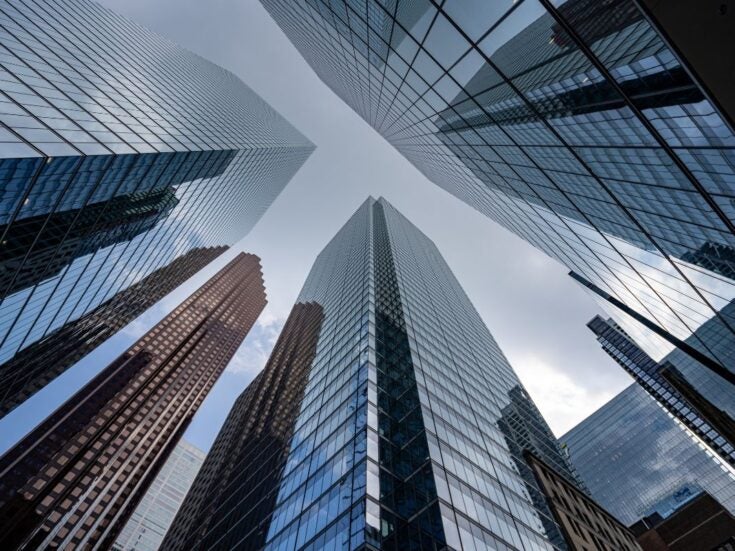
CREATIVE DESTRUCTION, AS natural as it is inevitable, displaces workers, companies, and sometimes entire industries. It also provides market capitalism with a self-regenerating dynamism that no other system can match. It stokes fear and inflicts pain — and it is a formidable force for economic growth and human progress.
Today, we are witnessing a new form of creative destruction, one that upends the international institutions and geopolitical balance of power that have helped move ideas, information, people, money, goods and services across borders at unprecedented speed and lifted hundreds of millions out of poverty. We can’t yet know what this revolution will leave in its wake, but it is without question the defining trend of our time.
How did we get here? Plans to tackle the challenges that mattered most for the global economy and relations among nations were once made by the G7, the elected leaders and finance ministers of the United States, Japan, Britain, France, Germany, Italy and Canada. With American leadership, these industrialised free-market democracies set the international agenda for nearly four decades. Western governments worried over Soviet military muscle and international influence, but the fluctuations of Soviet bloc economies had little impact on markets west of the Wall.

The financial crisis of 2008 marked a turning point. A market meltdown of historic proportions accelerated an inevitable shift towards a new global order, one in which China, India, Brazil, Turkey, the Arab monarchies of the Persian Gulf, and other emerging players demanded seats at the table and a much greater say in global governance. In November 2008, G7 leaders embraced the need for a G20, and officials from nineteen countries plus the European Union gathered in Washington to rescue the world economy.
Yet it’s never easy for twenty negotiators to agree on anything beyond high-minded declarations of principle, and it’s all but impossible when they don’t share basic political and economic values. There was no need for G7 leaders to debate the virtues of democracy, rule of law, freedoms of speech and assembly or free-market capitalism, but the G20 represents a broad divergence of views on all these subjects.
As a result, only when each member feels threatened by the same problem at the same moment is the G20 likely to produce substantive results. The financial crisis inspired dread of an imminent global meltdown, and early G20 summits produced modestly positive results. Recent gatherings have yielded much less of note.
As a result, this process of institutional creative destruction exacerbates a crucial problem: there is no longer any truly global leadership. For the foreseeable future, the United States will remain the most powerful nation on Earth.
Yet American voters are far more deeply concerned with jobs and debt than with the export of American values these days, and US policymakers are less willing to accept the costs and risks that come with the traditional US role of global policeman. The current wave of fury sweeping the Muslim world will not whet the American appetite for new foreign adventures.
Further, there are no other governments willing and able to fill this vacuum. Europe’s leaders are locked in a multi-year struggle to restore confidence in the eurozone, while for all the fanfare around each summit of the BRICS, countries like China, India and Brazil are managing a sharp economic slowdown, Russia lacks Soviet-scale military might and international influence and South Africa’s economy is no bigger than that of China’s sixth largest province.

IN FACT, DESPITE predictions of growing international clout, China is the emerging power least likely to develop along a predictable path. India, Brazil and Turkey can grow for the next decade with the same basic formula that generated growth over the past one, and America, Europe and Japan will ultimately reinvest in systems with a long record of success.
China, on the other hand, stands on the verge of some of the most complex and ambitious reforms in history. Its leaders have acknowledged that their country’s development model is ‘unstable, unbalanced, uncoordinated and unsustainable’, in the words of China’s premier, and the process of transferring wealth from state-run companies and the Chinese state to Chinese households will face assertive opposition from within the leadership itself. It could even create unprecedented divisions within the ruling party.
With so much change and so little global-level leadership, no wonder the past four years have triggered so much upheaval. We’ve seen the worst financial market meltdown in decades and a global recession. Europe continues to face its greatest existential challenge since the Second World War, and parties have been pushed from power in several European countries.
Turmoil in the Arab world has brought down governments in Egypt, Libya, Tunisia and Yemen — and plunged Syria into civil war. Maritime territorial disputes in Asia have provoked confrontations between Chinese, Japanese, Vietnamese, Philippine and other vessels.
In addition, never has the world faced so many transnational problems. How can governments cooperate to limit greenhouse gas emissions and the worst effects of climate change? How to resolve the risks posed by food price inflation and competition for scarce water supplies in Asia and North Africa? What can the world’s leaders do to manage risks of cyber-conflict and terrorism?
Then there are the more familiar problems of mitigating conflicts in the world’s hotspots.

Photograph by Jason Alden
HOW WILL THIS G-Zero revolution play out? Governments won’t accept costs and risks until they believe they have to — and until they become convinced that other governments won’t do it for them. But to protect their domestic political positions, leaders of established powers will act to protect their countries’ security, wealth and privileges.
Political elites in emerging states will try to ensure that crises don’t prevent their countries from emerging. As the G-Zero stirs up trouble, governments will have to build new systems and new alliances.
They will work together or act separately. They will re-imagine existing international institutions or build new ones. Either way, the G-Zero is not the new world order. It’s a period of revolutionary transition that will give way to something else.
What will that be? Much will depend on America’s relationship with China. If the crises incubated by the G-Zero revolution provide Washington and Beijing with common problems, and if these two are by far the world’s most powerful states, we’ll see the birth of an international system in which America and China share burdens.
If a generally cooperative United States and China share leadership with other strong states, we might see some real cooperation within a G20-like institution.
If America and China emerge stronger than any conceivable coalition of other states, and if the G-Zero pushes them towards a much more hostile relationship, we’re likely to see the development of a new form of Cold War which forces others to choose sides or fight to remain outside either orbit. But if Washington and Beijing find themselves at odds in a world with several other strong states, global power will fragment, and power will devolve to the strongest states within each region.
These scenarios represent extremes, and the future will probably yield some combination of at least two of these scenarios. But as with most revolutions, we can predict with confidence only that the path from here to there will produce confusion, surprises and crises — and new opportunities for those who recognise the revolution’s implications.
Ian Bremmer’s book, Every Nation for Itself: Winners and Losers in a G-Zero World, is published by Portfolio Penguin






